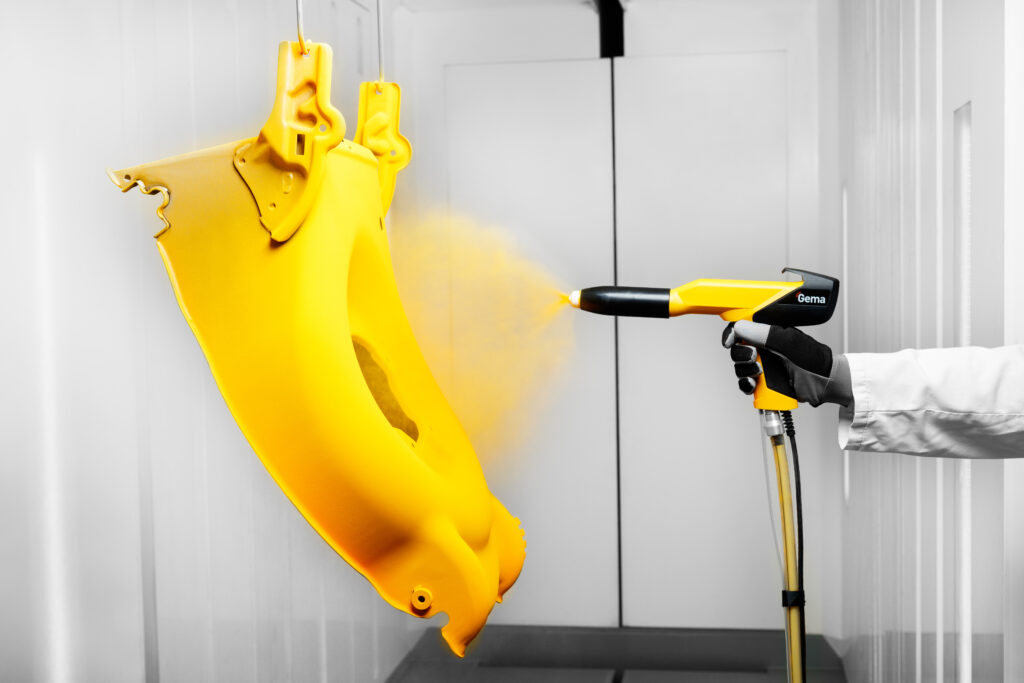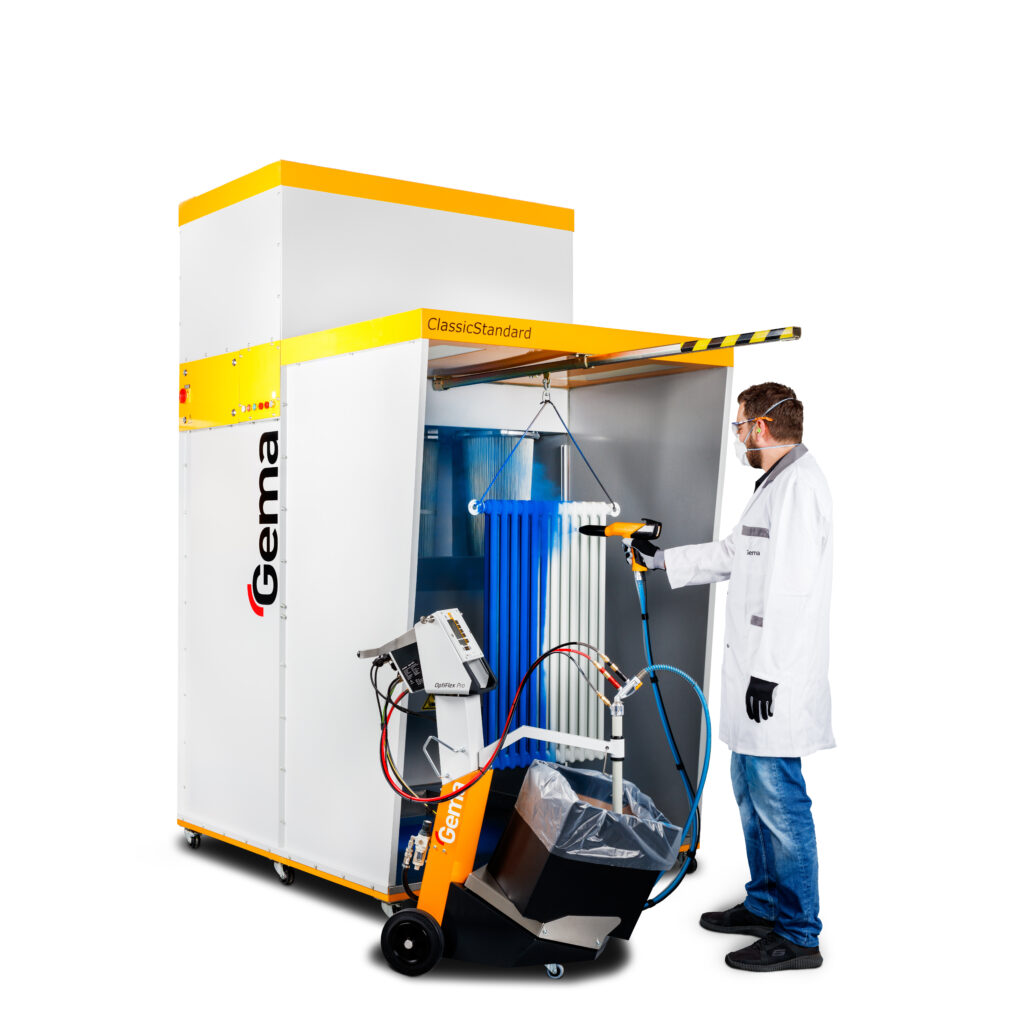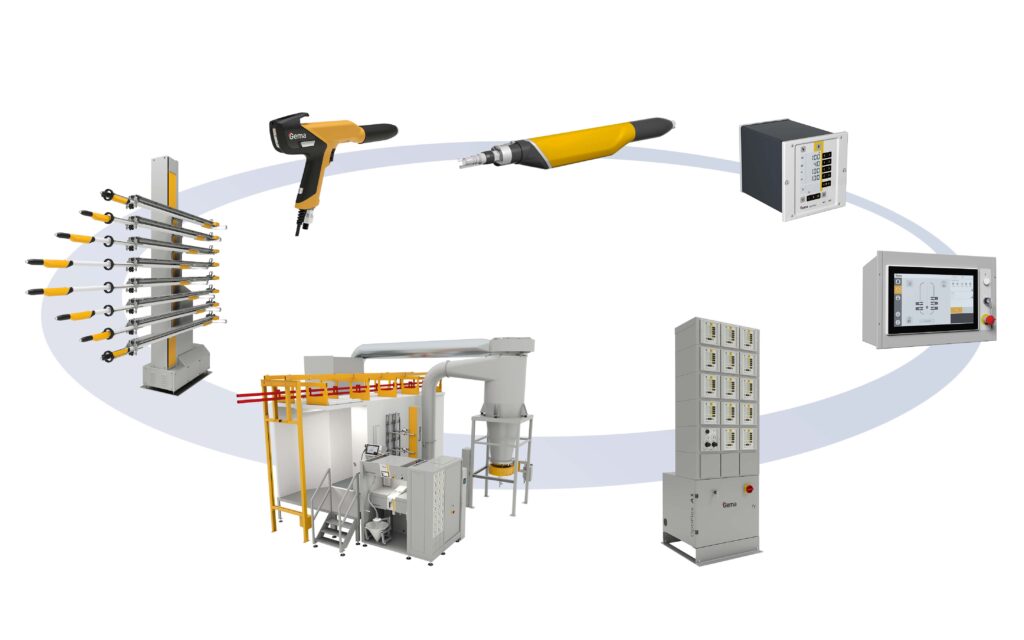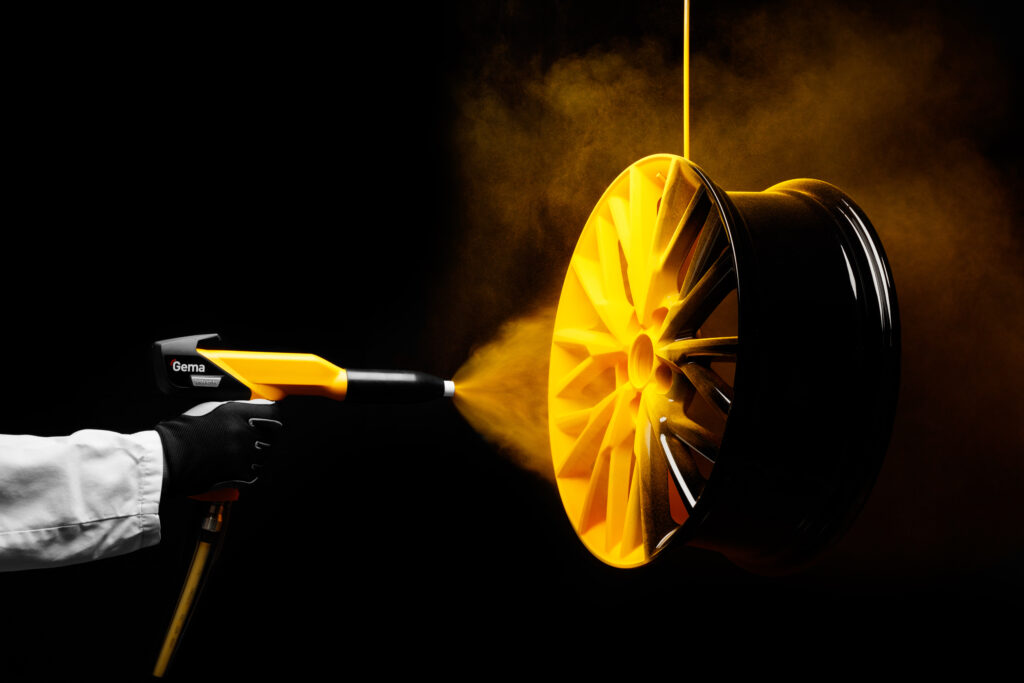Powder Coating Equipment 101
Powder coating is a versatile and durable finishing process used across various industries to protect and enhance the appearance of metal products. Whether you’re new or looking to upgrade your equipment, understanding the essentials of powder coating equipment is crucial.
This guide will explain the basics of powder coating equipment, showcasing a leading brand like Gema, found at BF Sales.
What is Powder Coating?
Powder coating is a dry finishing process that involves applying a powder material to a surface, which is then cured under heat to form a solid, durable finish. It is eco-friendly because it doesn’t need solvent like liquid paint, reducing waste. This process is widely used in automotive, industrial, and consumer product manufacturing due to its superior durability and aesthetic appeal.
Essential Powder Coating Equipment
To achieve a high-quality finish, you need the right equipment. Here are the essential components of a powder coating system:
1. Powder Coating Spray Gun

The spray gun is the heart of the powder coating process. It electrostatically charges the particles, ensuring they adhere to the metal surface. We offer a variety of Gema high-performance spray guns.
Types of Powder Coating Spray Guns
- Corona Guns: These guns use a high-voltage power supply to generate an electrostatic charge, which is applied to the particles as they exit the gun.
- Tribo Guns: These guns generate an electrostatic charge through friction, as the powder particles rub against the gun’s interior surfaces. Tribo guns are often used for coatings that require a smoother finish.
2. Powder Coating Booth

A powder coating booth provides a controlled environment for applying it, preventing contamination and overspray. These booths are designed to captures the excess, which can be recycled and reused, enhancing efficiency and reducing costs.
Types of Powder Coating Booths
- Open Face Booths: These booths have an open front, making them ideal for smaller items and batches.
- Closed Booths: Enclosed on all sides, these booths are suitable for larger items and higher production volumes, offering better containment of overspray.
3. Curing Oven
Once it is applied, the coated item is placed in a curing oven. The oven heats it to its melting point, allowing it to flow and form a smooth, even coating. The curing process is critical for achieving a durable and long-lasting finish.
Types of Curing Ovens
- Convection Ovens: These ovens use circulating hot air to cure the powder. They are versatile and can accommodate various sizes and shapes of items.
- Infrared Ovens: These ovens use infrared radiation to heat it. They offer faster curing times and are energy efficient but may not be suitable for all types.
4. Powder Feed System
The feed system transports from its container to the spray gun. It typically includes hoppers, pumps, and hoses. An efficient feed system ensures a consistent flow, reducing downtime and maintenance.
Types of Powder Feed Systems
- Vibratory Feed Systems: These systems use vibration to move it from the hopper to the gun. They are simple and reliable.
- Pump Feed Systems: These systems use pumps to transport it. They offer more precise control over the flow and are suitable for high-volume production.
5. Control Unit
The control unit manages the various parameters of the coating process, such as voltage, airflow, and flow rate. Advanced control units offer digital interfaces and automated settings for precision and ease of use.
Choosing the Right Powder Coating Equipment

Selecting the right powder coating equipment depends on several factors, including the size and type of items you’re coating, production volume, and specific application requirements. Here are a few tips to help you choose the best equipment for your needs:
- Consider Your Production Needs: High-volume operations may require automated systems, while smaller batches can be handled with manual equipment. Automated systems increase efficiency and consistency but come with a higher initial investment. Manual systems are more flexible and cost-effective for small to medium-sized operations.
- Evaluate the Coating Material: Different ones have unique characteristics and requirements. Ensure your equipment is compatible with the powders you intend to use. Some require specific types of spray guns or curing ovens to achieve the best results.
- Look for Reliable Brands: Investing in reputable brands like Gema ensures you get high-quality, durable equipment that delivers consistent results from a wide range of products to meet various needs and are known for innovation, consistency and reliability.
Benefits
Powder coating offers several advantages over traditional painting methods:
- Durability: These finishes are resistant to chipping, scratching, and fading, making them ideal for high-use items. This durability extends the lifespan of the coated items, reducing the need for frequent maintenance and replacements.
- Environmental Friendliness: It is a solvent-free process, reducing the release of volatile organic compounds (VOCs) into the environment. This makes it a safer choice for workers and reduces environmental impact.
- Efficiency: The electrostatic application process minimizes waste, and excess can be reclaimed and reused. This not only reduces costs but also improves the sustainability of the coating process.
- Aesthetic Flexibility: It provides a wide range of colors and finishes, including matte, glossy, and textured options. This versatility allows for greater creativity in design and can enhance the appearance of the coated items.
- Cost-Effectiveness: Although the initial investment in powder coating equipment may be higher than traditional painting systems, the long-term savings on materials, labor, and maintenance make it a cost-effective solution. It also requires less energy and time to complete, further reducing operational costs.
Common Applications

Powder coating is used in various industries due to its durability and aesthetic appeal. Here are some common applications:
- Automotive Industry: It is used on car parts such as wheels, bumpers, and engine components to provide a durable and attractive finish. It offers excellent resistance to road salts, chemicals, and UV light, making it ideal for automotive applications.
- Industrial Equipment: Machinery and equipment in industrial settings are often coated to protect against wear and corrosion. The robust finish extends the lifespan of the equipment and maintains its appearance.
- Consumer Goods: Many household items, such as appliances, furniture, and outdoor equipment, are coated to improve their durability and appearance. It offers a range of colors and finishes that enhance the aesthetic appeal of these products.
- Architectural Applications: Architectural elements like railings, fences, and aluminum extrusions are coated to protect against weathering and provide a consistent, attractive finish. It can withstand harsh environmental conditions, making it suitable for outdoor applications.
Conclusion
Investing in high-quality powder coating equipment is essential for achieving superior finishes and maximizing efficiency. Gema and BF Sales, offer reliable and advanced solutions for all your coating needs. Whether you’re a beginner or a seasoned professional, understanding the fundamentals of powder coating equipment will help you make informed decisions and achieve the best results.
Explore our Gema Powder Coating Equipment products to find the perfect tools for your powder coating projects.
For more information and expert advice, visit BF Sales today and discover our extensive range of powder coating solutions. Our team is ready to help you choose the best equipment to meet your specific needs, ensuring you achieve optimal results with every project.

